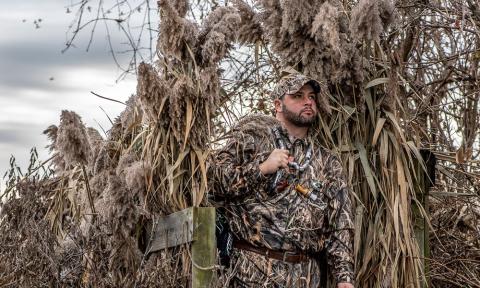Brad Fitzpatrick | Originally published in GameKeepers: Farming for Wildlife Magazine. To subscribe, click here.
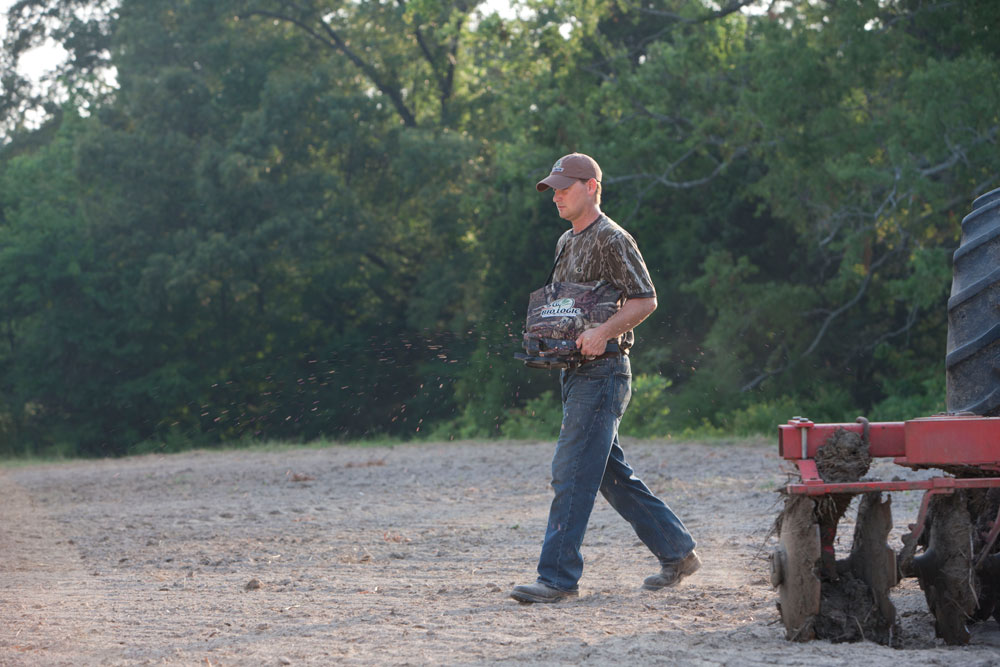
Not everyone has nutrient-rich, loamy soil with plenty of organic matter and a balanced pH that receives just the right amount of rain - however, that doesn’t mean you can’t establish effective food plots.
Everyone wants a perfect plot, but the problem is that not all hunting areas are blessed with perfect soil or receive adequate moisture. That can make things more complex when it comes time to plant, and it’s also a big reason that some plots fail. Before you invest a great deal of time and money into establishing a plot, be sure to take into account the type of soil on your land, the geography and the growing season. The more you know about your property, the easier it is to choose a food source that will grow and bring deer running year-round.
Rocky or sandy soils, excessive rain, poor nutrient quality, excessive heat and a lack of moisture can all cause problems for land managers. But with a bit of background knowledge and some advice from the experts, you can be well on your way to developing a productive plot that will not only support the deer on your land, it will also make your property more attractive to deer in the surrounding area, also increasing your density.
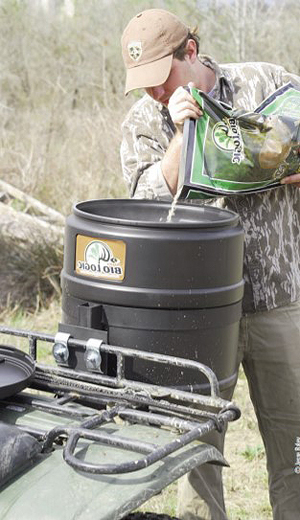
crops will do best and when to plant them
will be a huge part of getting your plots to
produce under adverse conditions.
Preparation: Understanding Planting Zones
Regardless of soil type, you need to understand which planting zone your property is located in and take recommended planting dates into account. While you can’t control the makeup of the soil on your land, you can determine when you plant your seeds. If you’re going to be successful in tough soils, it’s important to be aware of which region of the country your land falls in and plant according to the instructions.
Actually soil temperature is more important than your location, but northern latitudes differ in growing season and accordingly, planting dates, compared to southern regions. If you’re planting in perfect soil you might get away with missing the timing, but the tougher the soil conditions the more essential it is to base planting dates on those recommended from the seed supplier. If you’re going to succeed in tough soil you need every advantage so avoid the trap of planting too early or too late.
The exception to the rule, and the absolute most important determinant in having a successful plot, is “moisture.” If you have adequate topsoil moisture or are expecting a rain event, take advantage of it. As long as the soil temperatures are conducive to germination it’s OK to fudge with the planting dates a bit. Without moisture nothing grows…period.
“As an example, if you plant an all brassica blend like Maximum or Deer Radish too early, like May or early June, the plants are likely to be a bit too mature by the time hunting season rolls around.” Says Austin Delano, Head of Research and Development for BioLogic. “Cool season annuals that get planted during the spring of the year have a tendency to bolt to flower and seed and produce less forage. Since cool season annuals like brassicas or cereal grains are much less browsed and utilized by deer during the warm months, it is important to pay attention to your best planting dates to get optimum results.” says Delano. Tough soils require your crops to have every possible advantage and that requires planting when the time is right.
Rocky and Sandy Soil
A lot of gamekeepers who plant in the southern or eastern part of the U.S. will be planting in less than ideal soil types such as rocky ridge tops, sandy bottom ground or a combination of the two. But, according to Delano, that doesn’t mean you can’t establish productive and healthy plots on your land.
“The seed blends that work well in fertile farm ground will still grow great in these tougher soils,” says Delano. “Less than ideal soils just require more attention be paid to the planting process and timing.” One common problem, says Delano, is how quickly these very rocky or sandy soils leech nutrients, proper and consistent seed depth at planting time is also harder to control. “One key,” he says, “is soil sampling.” No matter where you live soil sampling is a key element for planting a successful plot.
“An inexpensive ($7.50) soil sample from the Biologic website is money well spent. It takes the guesswork out of planting,” said Delano. He adds, “Just because the soil next door has been producing row crops for years doesn’t mean the soil on your plot across the creek is fine.” He points out, “Oftentimes a field may have been treated for decades to get them to produce good crops and simply tossing out seeds without knowing what you’re up against is a recipe for failure. Before you begin planting in rocky or sandy soil (or for that matter, anywhere) you need to understand what’s happening in the ground. Then you’ll know if you need to augment the soil in any way, maybe by incorporating lime or organic matter, or applying fertilizer. This way you’ll give the plants the best chance to thrive in any soil type.
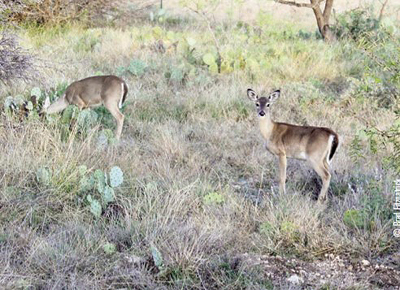
much less rainfall than east of the big river. From North
Dakota to Texas things can be dry, but you can still produce
food for your wildlife.
For quick-draining, sandy or rocky soils, Delano recommends certain specific perennials like alfalfa and chicory, which will do well in these types of soils and can thrive in conditions where other plants fail. Cereal grain-based blends like Outfitter’s Blend and Texas Draw are other options in these types of soils.
“Brassicas typically don’t do as well in real sandy soils,” he says. For that reason, sticking with cereal grain seed blends and hardy, drought-resistant perennials like chicory, alfalfa and some clovers are likely to yield good results. He does add that radishes, also a brassica, do manage dry soils relatively well, so they provide an option for land managers who want a late-season forage crop in dry areas.
Lablab is another good option, and Delano says that in dry climates this blend has a high browse tolerance, a critical factor when selecting a crop for dry conditions. In areas with poor native forage, deer tend to rely heavily on available resources, and those resources get hit hard. In dry areas, a forage resistant blend like Lablab makes perfect sense.
Wet Conditions
While many parts of the country are so dry that getting plants to grow is tough, abundant standing water and heavy rain can be just as detrimental to developing an effective plot. Unlike dry conditions in soils that don’t hold water, very wet soils in areas prone to flooding can saturate seeds and halt germination or kill already germinated seeds. One of the first steps in establishing a plot in these areas is to insure that the soil drains as much water as possible and allowing sunlight to help dry the ground.
Creating drainage channels is one way to prevent water from standing in your fields and in some areas terracing is another effective means to help drain or dry the soil. In areas where plots are shaded by dense foliage, removing limbs or trees to allow sunlight penetration does an effective job of drying out the soil.
Just as particular seeds are better in well-drained soils, certain seed blends are more effective in these wet conditions. If you’re dealing with soggy ground, Delano suggests looking to clover, a staple food source for deer and one of the most resilient crops in damp ground. Clover is also a very nutrient-rich plant that is highly palatable, and in areas where other plots have failed because of excess water or a lack of germination, clover plots may be your best option.
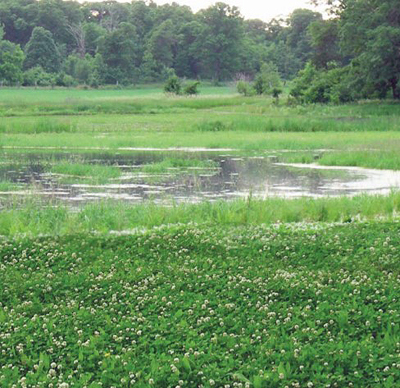
conditions. Not many of the whitetails' preferred foods like
to keep their roots wet for extended periods of time.
In areas where pooling water is common seeds can rot or germinate and suffocate from the lack of oxygen. Seeds that are planted and then soaked don’t always germinate, which means that the plot won’t produce the amount of forage it should, or, worse, it may fail altogether. The key is to try and plant seeds when they won’t be completely overwhelmed by rain or standing water, a task that is often easier to plan for than execute. You can’t always prepare for the weather, so prepare your fields the best you can by providing drainage and/or helping the soil to dry faster, and plant blends that have a proven record of success in damp ground.
Low pH
Unlike wet or sandy soil, soil pH is hard to discern without testing. It is important to emphasize yet again the importance of testing your soil prior to planting. Determining your soil pH is just one of the key elements to producing a good crop and a factor that is often overlooked as land managers busy themselves in preparing the soil. Many areas of the country are plagued with acidic soils and the resulting ground may, in its current state, be unsuitable for some seed blends, or possibly for producing a crop at all.
“If you are planting a plot for the first time in recently cleared ground, it is very common to have a low soil pH that needs lime,” says Delano. “Planting annuals, that are not as affected by lower pH soils as perennials, is recommended until your lime has had time to start neutralizing the soil acidity.” Lime can take weeks to months to correct acidic conditions, how long will depend much on your soil type and the amount of moisture that you receive. For spring/summer planting in soils with low pH, he recommends Lablab, a vigorous legume that provides a great deal of summertime forage.
“Later in the year, I recommend that landowners use seed blends heavy in cereal grains like new Winter Grass Plus or Trophy Oats. Both blends do well in soils with low pH levels. Deer seem to utilize these cereals a little better than an all brassica blend when you are starting off with a low pH level,” claimed Delano.
Acidic soils often require balancing pH with the use of lime, and that takes time. The good news is that many areas with acidic soils don’t produce good plots immediately, so other hunters overlook them. It is possible, however, to utilize acidic soils to grow healthy plots (and in turn, to grow and hold big deer), but it isn’t a quick process. You’ll need to be prepared to invest some time and effort into balancing the soil’s pH, but it is possible to turn a piece of acidic real estate into a haven for big deer.
Conclusion
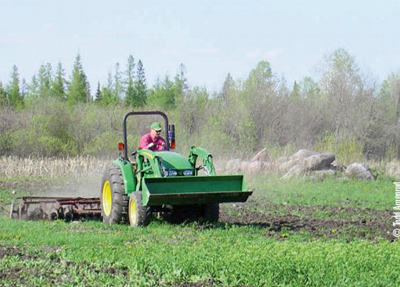
productive plots. Notice the pile of rocks in the background
- most were taken out one at a time by hand.
Nowadays, planting food plots is so common that you may have properties all around that are trying to draw in and hold the same deer that you are feeding. In areas where properties are relatively small, the competition is even more intense, and in many areas agricultural farms produce thousands of acres of corn, beans, and alfalfa, which provide deer with lots of additional forage. To be successful with so many other resources in your area you need to establish plots that bring the deer to your land. But how do you make your plots stand out?
“It can be tough if you’re surrounded by a lot of cash crops like corn and beans,” says Delano. As fall approaches, deer begin to lose other food sources, primarily crops that are being harvested and native browse that won’t return until spring. In addition, Delano says that “Deer usually leave the soybeans fields they have used all summer once the plants mature and leaves begin to yellow.” If you are relying on crops that are going to get harvested it may not line up well with prime hunting time. The key to having a successful plot in an area where resources are abundant is to time your planting perfectly and choose the right blends for your area. You want the crop to be at the peak of its palatability when you plan on hunting.
“Having something established that the deer can eat as soon as hunting season begins is a big help,” says Delano. “Trophy Oats and other cereal grain blends that are just a couple of weeks old and are young and tender when hunting season starts will usually draw deer in like a magnet once they’ve switched off agricultural crops. Later in the season, blends like Maximum and Deer Radish provide a great food source.”
The most important part of drawing deer into these blends is to be sure that the plants are most palatable and attractive to deer at the right time of year. If, for instance, the hunter on the next farm has planted a blend too early and has plots that are too mature and not palatable when the deer need it most, you should be able to draw those bucks to your property if your plots were planted later to provide better attraction and maximum forage.

















